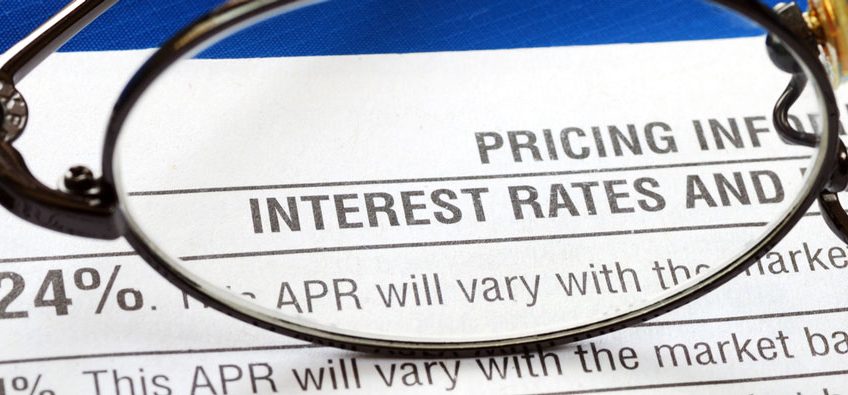
The Fed and Rates

Fed Chairman Powell Reconsiders Interest Rates
“In trying to explain the complexities of interest rates, inflation, money and banking, exchange rates and business cycles to my students, I leave them with this comforting thought: Don’t blame me for all this, blame the government. Without the interference of government, the entire topic would be duck soup.”
Murray Rothbard
In December, the Federal Reserve raised its Fed funds interest rate target to 2.5 percent. It clearly expressed its intent to hike interest rates at least a couple of more times in 2019.
But the stock market threw a fit. In seven consecutive trading days, the Dow Jones Industrials fell at least 350 points six times. In no time at all the DJIA gave up 4,000 points.
Fed chairman Jerome Powell felt the heat. And he saw the light. Additional interest rate hikes are off the table for now, Powell having observed that the case for rate hikes had “weakened.”

Not for the first time Wall Street demonstrated its veto power over Fed actions.
And the stock market has returned to its December highs.
For those of us that understand that interest rates, the costs of borrowing and returns on lending, are simply prices, the price of money, the entire episode reveals the madness of the monetary authorities. Prices are not just arbitrary things. They communicate vital information about supply and demand. When, instead of moving freely, prices are set arbitrarily by government authorities, they create harmful and wasteful conditions.
Prices that are set artificially low create harmful shortages, while those that are set above what real conditions of supply and demand would dictate create wasteful surpluses.
In the process vital information that directs valuable resources to where they are most needed by producers and savers and consumers is corrupted. Think back no further than the 2008 housing bust when artificial interference in mortgage lending and rates deceived builders and sellers and lenders about the extent of credit worthy buyers. When reality was finally revealed, the artificial boom was followed by a painful bust.
Yet central banks are like wrecking machines for crucial information about real conditions of credit. And while the Fed’s low rates are what its Wall Street overseers want, they are harmful to persons on fixed incomes that depend on interest income. They encourage older people and retirees to take investment risks that are inappropriate to their circumstances. They are harmful to pension funds that are underperforming and will soon ask to be bailed out by the taxpayers. The are a disincentive to savers and encourage speculation.
Interest rate interventions by central banks would be funny if they were not so destructive. Frantic Fed officials changed interest rates 23 times in 1978. Financial planning and business decision-making became almost impossible.
But interventionism is compulsive with central bankers, and not just with the Fed. Here’s a sample of actual headlines about recent central bank activities around the world:
- Sri Lanka holds rates, cuts reserve ratio another 100 bps
- Jamaica cuts rate 25 bps, reserve ratio to boost inflation
- Tunisia raises rate 100 bps to curb inflationary pressures
- Egypt cuts rate 100 bps after hitting first inflation target
- Mozambique holds rate after 9 cuts in prudent policy
The point is that monetary meddling is a world-wide phenomenon. It is an occupational hazard of central banking and fiat money regimes.
But back to the US and contemporary events, where, the Fed having spoken, the stock market has done a complete 360 in recent weeks, and we’re back where we were.
One thing is different, however. The Fed’s theoretical objective in raising interest rates was to somehow mop up or sterilize all the mad money printing of Quantitative Easing. Before that liquidity leaks into the general economy and wreaks havoc with consumer prices.
Now we know that the QE trillions will not be neutralized.
One of the most basic principles of economics was made memorable in the oft-repeated aphorism of Milton Friedman: “There ain’t no such thing as a free lunch.” So, who pays for the QE lunch? The Fed has decided that the cost of a QE clean-up is too high for its crony constituency.
Said differently, the trillions of dollars the Fed created with QE will exact a cost, a very high cost. But the Fed is not willing for it to be borne by the financial institutions it serves.
The gold market has taken note of all this. While the stock market is back where it was at the beginning of December, gold did not return to its December lows where this turn of events began. Because gold discounts central banking machinations and paper money frauds, it has convincingly marched higher throughout the entire episode.
Afterall, gold always shows up wherever and whenever monetary shenanigans are afoot and currency destruction is in the works.
Like here and now.

